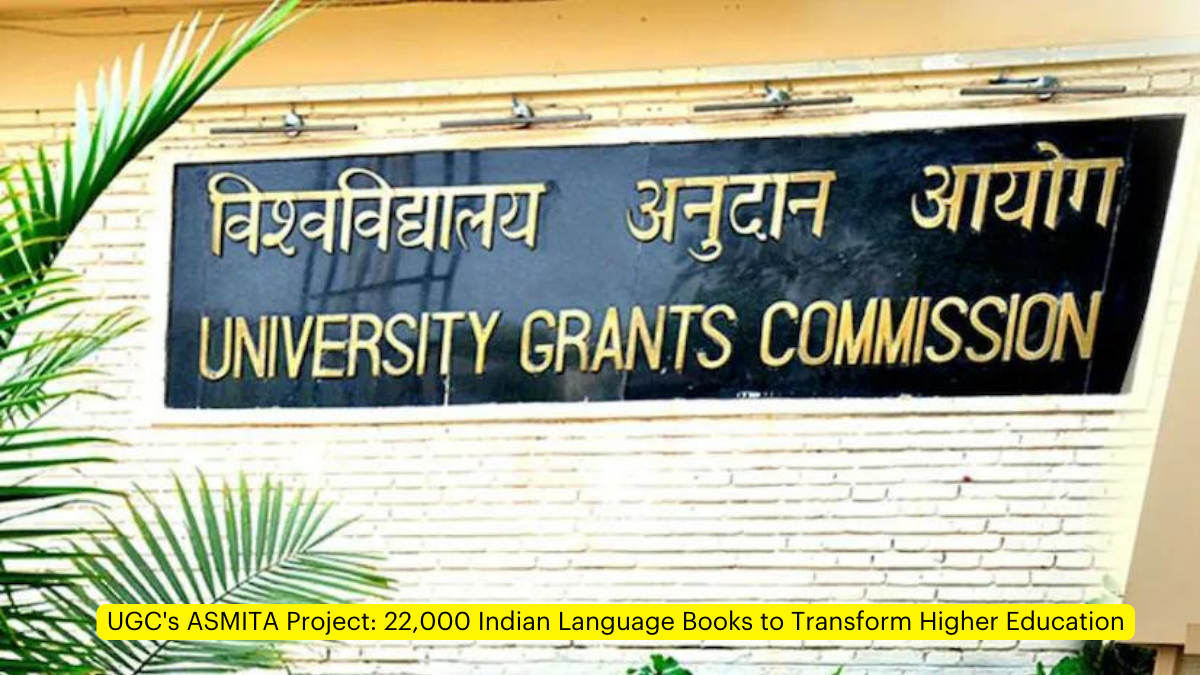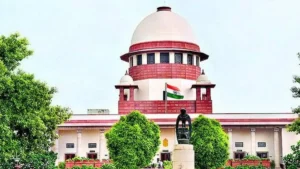The Ministry of Education and the University Grants Commission (UGC) unveiled an ambitious project aimed at enriching the landscape of Indian language literature in higher education. This groundbreaking initiative, known as ASMITA (Augmenting Study Materials in Indian Languages through Translation and Academic Writing), sets out to develop an impressive 22,000 books in Indian languages over the next five years.
The ASMITA Project: Bridging Linguistic Gaps in Higher Education
Project Overview
ASMITA represents a collaborative effort between the UGC and the Bharatiya Bhasha Samiti, a high-powered committee under the Ministry of Education. The project’s primary objective is to promote Indian languages in education, addressing the long-standing need for quality academic resources in regional languages.
Project Launch and Leadership
The project was officially launched by Sanjay Murthy, Secretary of Higher Education, marking a significant milestone in India’s educational landscape. This initiative aligns closely with the objectives of the National Education Policy (NEP), which emphasizes the importance of multilingual education and the preservation of India’s rich linguistic heritage.
Scope and Goals
According to UGC Chairman Jagadesh Kumar, ASMITA aims to create a robust ecosystem for translation and original book writing in Indian languages across various disciplines within higher education. The ambitious target is to produce 1,000 books in each of the 22 scheduled languages within five years, culminating in a total of 22,000 books in Bharatiya bhasha.
Implementation Strategy
Nodal Universities and Regional Collaboration
To ensure effective implementation, thirteen nodal universities have been identified to lead the project. These institutions will work in tandem with member universities from various regions, fostering a collaborative approach to content creation and translation.
Standardized Operating Procedure
The UGC has developed a comprehensive Standard Operating Procedure (SOP) to guide the book-writing process in each assigned language. This SOP encompasses several key stages:
- Identification of nodal officers and authors
- Allocation of titles, subjects, and programs
- Writing and editing processes
- Manuscript submission
- Review and plagiarism checks
- Finalization and design
- Proofreading
- E-publication
This structured approach ensures consistency and quality across all publications developed under the ASMITA project.
Complementary Initiatives
Bahubhasha Shabdakosh
Alongside ASMITA, the ministry launched the “Bahubhasha Shabdakosh”, a comprehensive multilingual dictionary serving as a single-point reference for words in all Indian languages and their meanings. This initiative will be developed by the Central Institute of Indian Languages (CIIL) in collaboration with the Bharatiya Bhasha Samiti.
The Shabdakosh aims to facilitate the use of Indian words, phrases, and sentences in various modern domains, including IT, industry, research, and education.
Real-time Translation Architecture
While details were not extensively provided in the original article, the launch of a Real-time Translation Architecture was mentioned as part of the trio of initiatives unveiled alongside ASMITA and the Bahubhasha Shabdakosh.
Impact and Significance
Empowering Learners
Education Minister Dharmendra Pradhan emphasized the transformative potential of these initiatives. He stated that they would “give momentum to imparting learning in Bharatiya Bhashas, empowering learners in their academic pursuits and preserving and promoting India’s language traditions.”
Bridging Linguistic Divides
The ASMITA project and its associated initiatives are expected to play a crucial role in bridging linguistic divides within India’s diverse educational landscape. By providing academic resources in multiple Indian languages, these efforts aim to make quality education more accessible to a broader range of students.
Fostering Social Cohesion
Pradhan also highlighted the potential of these initiatives to foster social cohesion and unity. By promoting understanding and appreciation of various Indian languages and cultures, the project aims to contribute to a more integrated and harmonious society.
Global Citizenship
The Education Minister expressed his belief that these initiatives, aligned with the NEP, will help transform Indian youth into socially responsible global citizens. This vision underscores the broader implications of linguistic and cultural education in an increasingly interconnected world.
Important takeaways for all competitive exams:
- UGC Founded: November 1956;
- UGC Headquarters: New Delhi;
- UGC Chairman: Prof. Mamidala Jagadesh Kumar.




 Centre Unveils ₹17 Lakh Crore PPP Projec...
Centre Unveils ₹17 Lakh Crore PPP Projec...
 Haryana to Launch India's First Hydrogen...
Haryana to Launch India's First Hydrogen...
 Supreme Court Signs MoU for Law Clerks E...
Supreme Court Signs MoU for Law Clerks E...







